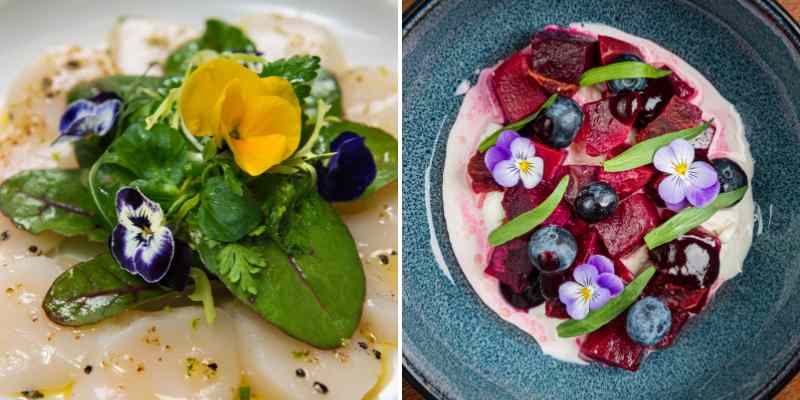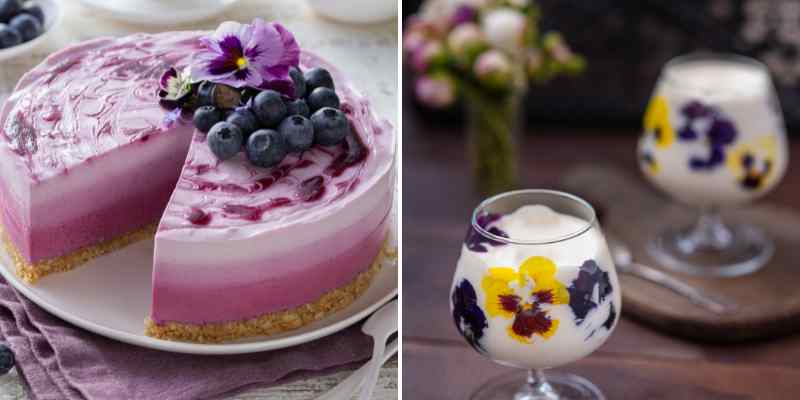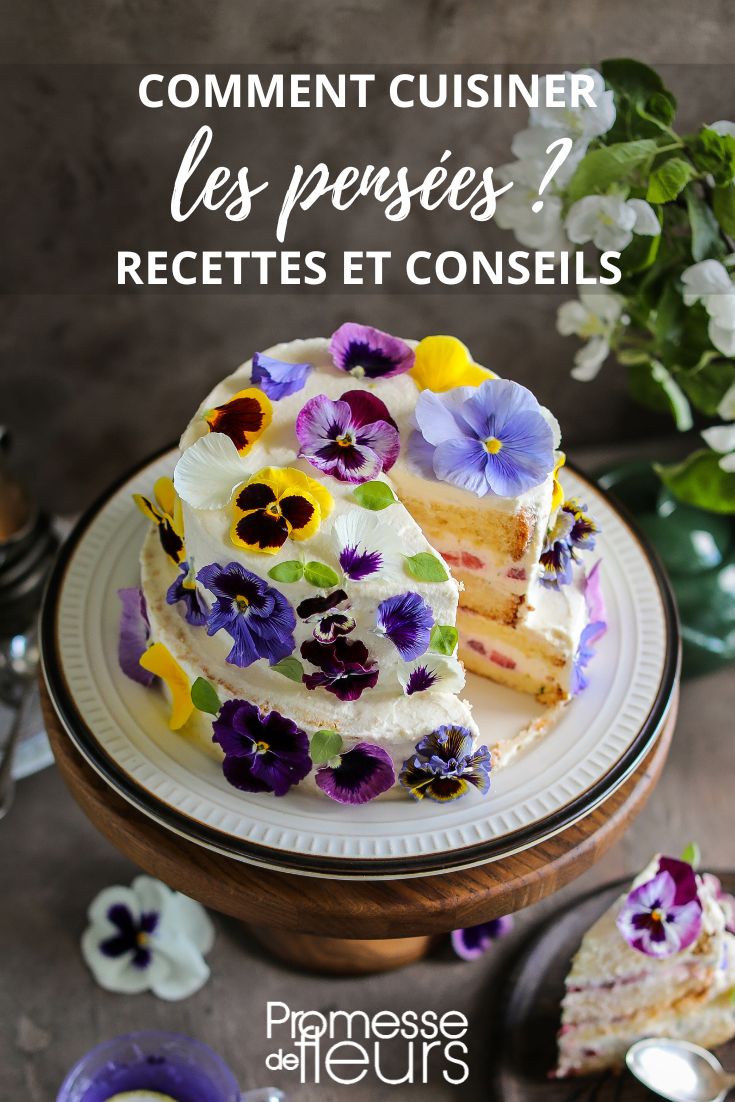In edible flowers family, I call… the pansy! Who would have thought? This familiar little, long-flowering, very colourful flower is not only delightful in gardens through winter and spring, but it can also be eaten. Alongside nasturtium, it is one of the flowers most commonly used in cooking. At a time when inventive plant-based cooking is on the rise, which pansies are suitable for the plate? And how can they be incorporated into dishes to add colour and poetry? Discover all our ideas for cooking with pansies.

Which pansies are edible?
We know the pansies with large, often bicoloured flowers and numerous cultivars, which are garden-grown hybrids of violets (Viola x wittrockiana). These pansies are edible — in fact all are — but for culinary use, smaller-flowered types are preferred, being more elegant for plating and more pleasant on the palate, such as Viola cornuta or Viola tricolor. As they come in countless shades, choose those you like best, whether for the garden or to embellish dishes.
The Viola tricolor, a charming little wild pansy, usually white, yellow and purple, is often used in spring tubs alongside ivy or heather, and is perfectly edible. It flowers from March–April to October.
The Viola cornuta, flowering in summer in a lovely pale mauve, is also popular with chefs.
As for the violet, or Viola odorata, which blooms late winter into spring, it too belongs to Violaceae and is mainly used for sweet preparations because of its stronger aroma and fragrance.

How to grow and harvest pansies?
Pansies appreciate cool partial shade and a cool, free‑draining soil without waterlogging. Sown in the garden or in a pot in September, they will flower until first frost. Always remove faded flowers to encourage a new flush of flowering.
Harvest when flowers are just opening for violets and freshly open for other pansies. Pick flowers gently into a basket. They should be stripped of their bitter peduncle before serving.
Delicate flowers
Pansies are particularly delicate and spoil quickly, and as with all flowers used for culinary purposes, prepare them at the moment of serving. They are therefore mainly used raw for plating, to decorate a salad or a dessert. Just after dressing a salad with vinaigrette, carefully place a few flowers on the plate.
From garden to plate
Pansies lend themselves to many culinary uses, both savoury and sweet. They mainly add a beautiful touch of colour to salads, mixed leaves, crustacean or fish carpaccios and are often paired with nasturtiums. Their very mild flavour does not disturb the dish and they are used principally for decoration. A few flowers on beetroot shoots or rocket or on fresh herb cheese so they stand out, or for festive days on a slice of foie gras, this small touch adds a very chic note to the table.

Feel free to garnish cocktails with your prettiest pansies too — guaranteed success!
Other, less classic uses are possible when you have a large quantity of flowers available, for example if you have sown them yourself:
- in homemade syrup with Viola odorata, to drizzle over fromage blanc, panna cotta, or use in drinks.
- in floral ice cream or sorbet once you have prepared your homemade violet syrup, add it to an ice‑cream base (custard).
- as an infusion: with the wild pansy (Viola tricolor) known for anti‑inflammatory properties. When dried, make a tisane by infusing a heaped teaspoon of flower petals in boiling water, covered. You can add some dried hibiscus, hips or verbena. Aiding digestion, drink this infusion preferably after a meal; it is also recommended for bronchial ailments.
- as a flower conserve — a subtle alternative to jam, similar to rose petal jelly — macerate petals in sugar and add a gelling agent to obtain a spreadable texture.
- crystallised or candied at low temperature if you fancy homemade confectionery, using only Viola odorata, as done in Toulouse. Enjoy them like sweets or use as decoration on cakes, or to accompany a violet kir impérial or a glass of champagne.

Further reading
Everything about pansies in our complete file Pansies, violas: cultivation, sowing, planting and maintenance, and also Pansies: how to choose in four points?, How to sow pansies? and How to divide pansies?
Do you love using garden flowers in the kitchen? Discover our tutorials: How to make a homemade hibiscus infusion?; How to make poppy syrup?, How to use nasturtium in cooking?, and How to make elderflower fritters?
































Comments